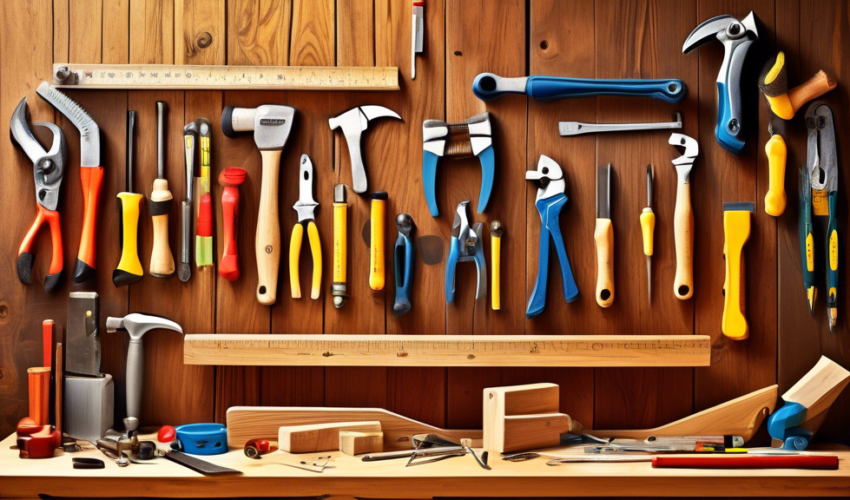Introduction to Carpentry Tools
Carpentry is a skilled trade that requires precision, expertise, and the right set of tools. Whether you’re a professional carpenter or an enthusiastic DIYer, possessing the proper equipment is essential for executing various woodworking projects efficiently and accurately. This article explores the essential tools required for carpentry, offering insights into their uses and benefits.
Basic Carpentry Tools
The foundation of any carpenter’s toolkit begins with several hand tools that are vital for measuring, cutting, and joining wood. Here is a breakdown of these fundamental tools:
Measuring and Layout Tools
- Tape Measure: A retractable steel tape used to measure lengths and distances accurately. Opt for a durable, easy-to-read tape measure for convenience.
- Square: Carpenters use various squares for checking angles and ensuring precision in their work. The most common are the try square, framing square, and speed square.
- Level: Necessary for determining the horizontality and verticality of surfaces. Levels come in different sizes, from small torpedo levels to larger box levels.
- Chalk Line: A useful tool for marking long, straight lines on flat surfaces. This tool is essential for laying out cuts over large areas.
Cutting Tools
- Hand Saw: Fundamental for cutting wood manually. A good-quality hand saw with a durable blade is crucial for making precise cuts.
- Power Saw: Power saws, such as circular saws, miter saws, and table saws, significantly reduce the effort and time needed for cutting large or thick pieces of wood.
- Jigsaw: Ideal for making irregular cuts and curves. Choose a jigsaw with adjustable speeds for better control.
- Utility Knife: Handy for more than just cutting; a sharp utility knife is excellent for scribing wood, cutting shims, and cleaning up joinery.
Fastening Tools
- Hammer: Perhaps the most iconic tool in carpentry, hammers are used for driving nails into wood. A claw hammer also allows for pulling them out with ease.
- Screwdrivers: Essential for driving screws, a set including various sizes and head types (Phillips, flat-head, etc.) will cover most needs.
- Nail Gun: For high-volume work, a nail gun can significantly increase productivity, driving nails quickly and consistently.
Advanced Carpentry Tools
For more complex projects, carpenters may require more specialized tools that provide greater precision and capability:
Joinery Tools
- Router: Used for hollowing out areas in the face of a piece of wood, routers are excellent for creating joints, grooves, and intricate patterns.
- Chisels: Needed for detailed and fine wood removal when making joints or fitting doors and other elements.
- Biscuit Joiner: A power tool used to join two pieces of wood together with biscuit-shaped inserts, which provides strengthened joints without visible marks.
Sanding and Finishing Tools
- Orbital Sander: For finishing surfaces, an orbital sander smooths wood faster than sanding by hand, resulting in a finer finish.
- Sanding Block: While power sanders are efficient, manual sanding blocks are necessary for fine detail work and corners where power tools cannot reach.
- Finish Sprayer: For applying stains and finishes, a finish sprayer can evenly coat wood surfaces far more efficiently than brushes or rollers.
Tool Maintenance and Care
Maintenance is crucial in extending the life of carpentry tools. Regular cleaning, proper storage, and timely sharpening of blades can keep tools in optimal condition. Investing in quality tools and taking care of them ensures they perform well and remain safe to use for years.
Conclusion
Building a comprehensive carpentry toolkit is a gradual process that depends largely on the specific tasks you plan to undertake. Starting with the basic tools and gradually expanding to include more specialized equipment allows you to enhance your skills and capability in carpentry. Remember, the quality of your work greatly depends on the quality of the tools you use, so consider investing in the best you can afford and maintain them well.

